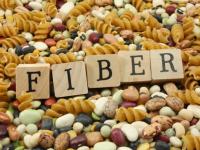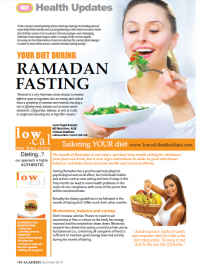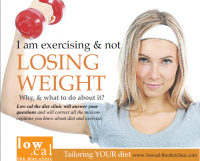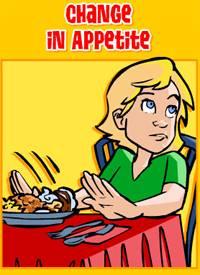Wave goodbye belly fat
PDF :
Wave Goodbye to belly fat and Stand sideways with PRIDE!
Introduction:
Frustrated by your belly fat? Having no choice but to wear that X-large shirt to hide that tummy? Can’t sit or stand without covering your belly with your hands? Tired of hearing all these “Are you pregnant comments?” Now it’s time to wave goodbye to belly fat!
Accumulation of excess fat around the abdomen is more dangerous than the accumulation of excess fat around the hips and thighs. Several studies have associated abdominal fat with severe health problems such as cardiovascular problems, dylipidemia, hypertension, and type 2 diabetes. Overall, men tend to deposit extra fat in the abdominal area more than women do, this credit goes to sex hormone differences. Before menopause, women tend to deposit most of their fat in the hips and thighs. Around menopause, as estrogen levels drop, body fat is redistributed to the abdomen. Although our genes play a role in determining where we carry our extra fat, we shall never neglect the importance of our eating behavior and lifestyle choices in contributing to this issue. The best way to fight belly fat is to adopt sound eating habits and to stay active.
How much is too much of a belly fat?
Waist circumference is a practical indicator to assess abdominal fat. A high waist circumference indicates a high amount of fat in the abdominal area. In order to measure your waist circumference, or belly fat, use a non stretchable measuring tape and place it around your waist while relaxing your tummy and not sucking it in. Do it while you're standing up, and make sure the measuring tape is horizontal.
For optimal health, waist circumference should be:
· Less than 80 cm for women
· Less than 94 cm for men
What is the dietary cause of belly fat?
Is belly fat due to eating too much high fat foods? Or just eating excess calories of any food? The cause of belly fat has been associated with eating excess calories of any kind. However, that doesn’t mean that eating high fat foods is ok. Eating high fat foods is not helpful at all, but excess calories from any food has been shown to increase abdominal fat. Be sure to read food labels for caloric and fat content, include fruits and veggies, reduce consumption of saturated fats and trans fat and control your portion size in order to make sure that you are not exceeding your daily caloric intake.
Never skip breakfast!
The first and most crucial means of losing belly fat is to never skip breakfast. Most individuals believe that skipping breakfast will help them cut down on calories during the day. However, studies have shown that those who skip breakfast tend to eat more during the rest of the day and thus gain weight because they are more likely to get hungry and nibble on calorie-dense snacks. A healthy breakfast should always include lean protein and high-fiber foods since this combination yields the maximum sense of satiety. Try eggs, low fat dairy products, and whole grain bread with plenty of vegetables. Limit your consumption of sugary cereals, waffles, pancakes, and croissants.
Eat plenty of fiber
All kinds of vegetables, fruits and whole grains can help you increase your fiber in your diet. Leave the skin on your fruits and vegetables, since fiber is found in skin of fruits. Make sure to incorporate five servings of fruits and vegetables into your diet. One serving of a fruit or vegetable is equivalent to any fruit or vegetable that is equal to the size of the palm of your hand, or equivalent to ½ cup of cooked vegetables. In addition, switch to whole grain bread, pasta, and rice instead of white. A study in the American Journal of Clinical Nutrition showed that a calorie-controlled diet rich in whole grains can remove extra fat from the abdomen of obese subjects.
Stick to lean protein
As mentioned earlier, including lean proteins at each meal helps you feel fuller throughout the day. Poultry, lean meat, fish, low fat dairy, eggs, and nuts are all examples of healthy lean proteins.
Avoid trans fats and saturated fats
Trans fats, found in margarines, crackers, chips, cookies, fried items, and hydrogenated oils, cause fat to be accumulated in the abdomen, so avoid these foods items as much as you can. Saturated fats aren’t any better. Opt for the healthier fat that can avoid the accumulation of belly fat. This includes the monounsaturated fats found in oils such as canola oil, olive oil, avocados, nuts, and seeds. Keep in mind that unsaturated fats are still considered fats that are high in calories and that need to be restricted in your diet.
Control portion size
If you do not restrict your caloric intake, you're not going to lose belly fat. It takes a 3500-calorie deficit a week to lose half a kilo of fat. That is, a 500 calorie deficit every day of the week to lose half a kilo of fat. That doesn’t mean you have to stop eating the food you enjoy, but at least take a smaller portion of it. One way to control your portion size is to eat smaller dinners. Large dinners are a disaster for people trying to lose weight since most people aren't very active after dinner and our hormones that are responsible for digestion have minimal activity at night. So try to have a small dinner at least 3 hours before you sleep.
Alcohol in moderation
Your body needs carbohydrates, protein, and a limited amount of fat to function properly. As for alcohol, it is not a vital source of calories, nor a significant source of vitamins and minerals. Alcohol could have a negative impact on your ability to lose weight depending on the frequency and level of consumption. Fat has 9kcal per 1 gram. Alcohol has 7kcal per 1 gram, almost the same amount of calories as fat and twice the amount of calories of carbohydrates and protein. 12 oz of regular beer has 150 calories, 12 oz of light beer has 90 calories, and 12 oz of nonalcoholic beer has 50 calories. As for wine, 4 oz of rose or red wine has 85 calories and 4 oz of white wine has 80 calories. 4 oz of champagne has 73 calories. When you further add juice, soda, energy drink or grenadine to your alcohol drink, you are adding more and more calories that could sum up to a total of calories equivalent to a meal-sized dish. A beer belly is not only due to alcohol intake, but there are several direct associations between alcohol and fat metabolism. Research shows that our metabolism slows down when we drink alcohol. When you drink alcohol, your liver shuts down the metabolism of food you have eaten throughout the day and switches to metabolizing alcohol. Thus, this leaves your body to store all the food you have eaten as fat because your liver is too busy getting rid of alcohol. This inhibition of fat metabolism in the liver results in fat being built up around your waist. Furthermore, studies have shown that drinking alcohol before a meal may increase your caloric intake by 20%. To keep yourself from overeating, eat before you drink. Having a balanced meal before drinking will keep you satisfied and will help you control your alcohol intake. Consume alcohol in moderation; this translates to two drinks per week for women and three for men.
Nooo to soft drinks!
According to the American Heart Association, “soft drinks and other sugar-sweetened beverages are the no. 1 source of added sugars in the American diet.” Added sugar translates to added calories, which is what you need to avoid on a weight loss regimen and what you need to avoid in order to cut down on belly fat because these added sugars tend to be stored right there in your belly.
Does switching to diet sodas reduce the harm?
Although some research has suggested that people who consume diet sodas instead of regular sodas as part of a calorie-restricted diet do lose weight, other studies have suggested that diet soft drinks could even lead to weight gain. For now, there’s no convincing proof either way. However, one diet soda per day is more than enough. If you can avoid it that would be perfect taking into consideration all the artificial sweetener, caffeine, phosphoric acids, artificial colorants and flavors there are in it and the side effects they could impose.
Green tea?
According to the Journal of Nutrition, green tea, in combination with a calorie restricted diet and exercise, can help you lose weight. Catechin, a substance found in green tea, stimulates the body to burn calories and enhance loss of belly fat.
And Relax!
Research indicates that when you are stressed, your body secretes a hormone called “cortisol” that is associated with an increase in belly fat. Make time for fun and relaxation, go for a walk, talk with your good friend, listen to music, etc... Try whatever works with you to manage your stress. A piece of advice, exercise is the best counter attack to your stress.
Is it true that fat around the abdomen is the hardest to lose than fat elsewhere in your body?
When you lose weight, you’re much more likely to lose it in your midsection. That means, when you lose weight, you lose it first from your abdomen. Remember, there is no magic diet to reduce only belly fat. Losing weight on a well-balanced plan will reduce total body fat, including fat in your abdomen.
Do spot reduction exercises that target belly fat work?
There is no such thing as spot reduction exercises that target solely belly fat. Doing only sit-ups or any other type of abdominal exercise strengthens your abdominal muscles, however, spot exercises alone won’t specifically decrease belly fat. The best way to lose belly fat is to combine both healthy diet and regular exercise. What type of exercise are we talking about? Resistance training is great for strengthening muscle mass. But if you want to lose your belly fat, aerobic exercise is a better choice because it increases your heart rate, causing you to sweat and burn more calories. Aim to exercise vigorously for at least half an hour, most days of the week as a Duke University study shows.
Exercise in small bursts. Studies show that alternating small bursts of energy with short resting periods, referred to as “interval training”, can improve muscles, build endurance and burn more calories than regular exercise. For example, while jogging, start walking at a regular pace for 10 minutes, then increase your speed and run as fast as you can for another 10 minutes, then slow to a walk until you catch your breath.
Tips on how to include physical activity to your busy daily schedule
Sometimes it’s just not feasible for you to get all that 30 minutes of exercise all at once. It might be more suitable to divide up your workouts into shorter sessions to guarantee that you actually get your workout done. Try splitting your 30 minutes to at least three 10 minute bouts. This strategy can be easily implemented into your busy schedule and you will be able to complete your workout with much more energy knowing that the finish is near. Here is an example of a mini workout that you can include to your daily schedule.
Mini Workout
1. 2 minutes sprint, run/jog
2. 1 minute of any squat movement
3. 2 minutes Jump Rope
4. 1 minute of any push-up movement
(Repeat three times)
If exercise is simply not an option for you, making small, subtle changes create a big difference. For example, take the stairs instead of the elevator, walk instead of driving, stand up and walk for 30 steps every 30 minutes.
Our low.cal take home message
In order to lose belly fat, evidence recommends combining a healthy diet with exercise. Following a personal tailored diet rich in vegetables, complex carbohydrates, low-fat dairy, fruits and lean protein is the basis for a diet that supplies all the essential nutrients you require while helping you to cut down your belly fat. Don’t forget to set realistic, individualized goals. Your goals should be focused on your own body, not on some picture perfect image.
















